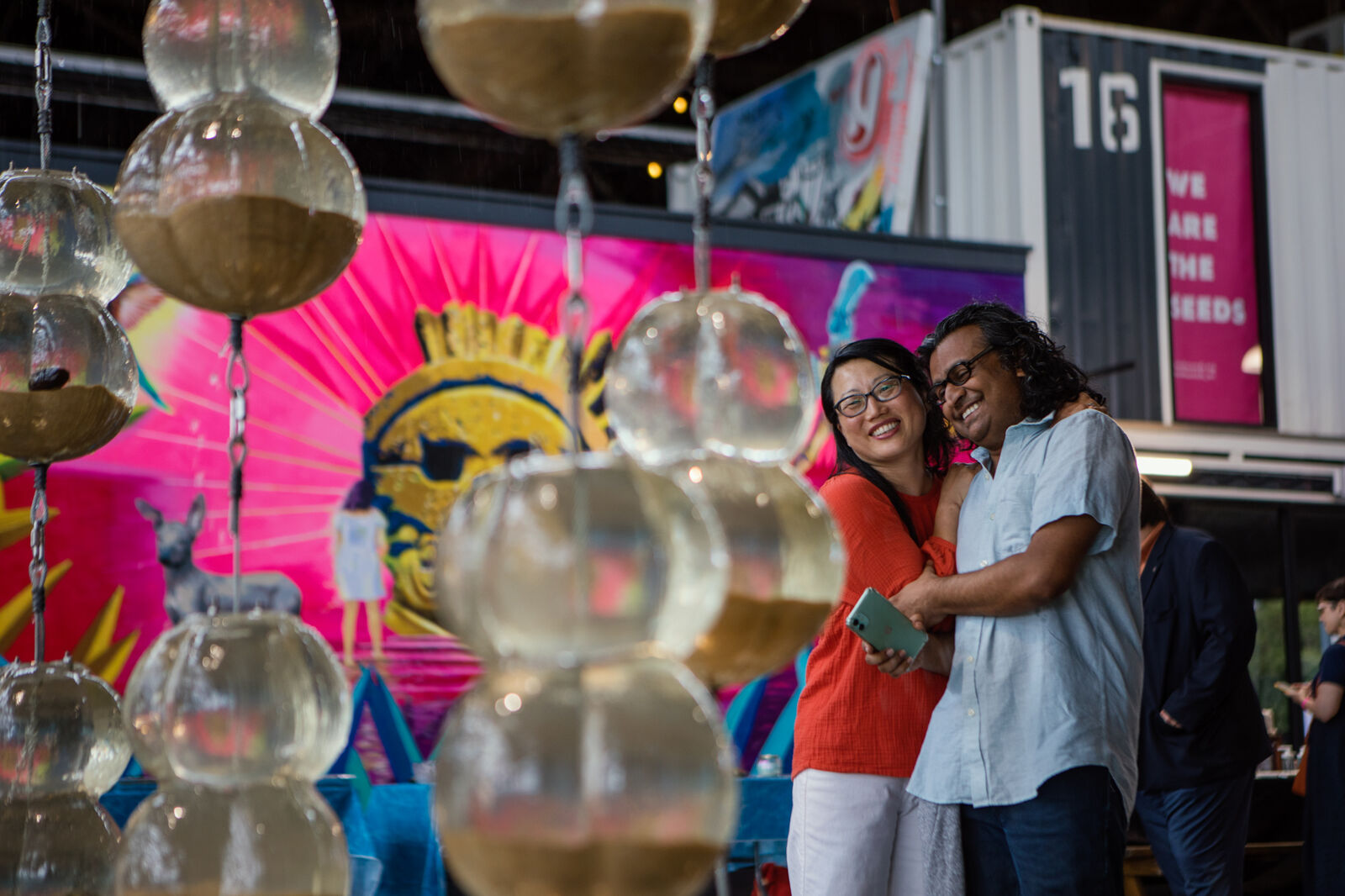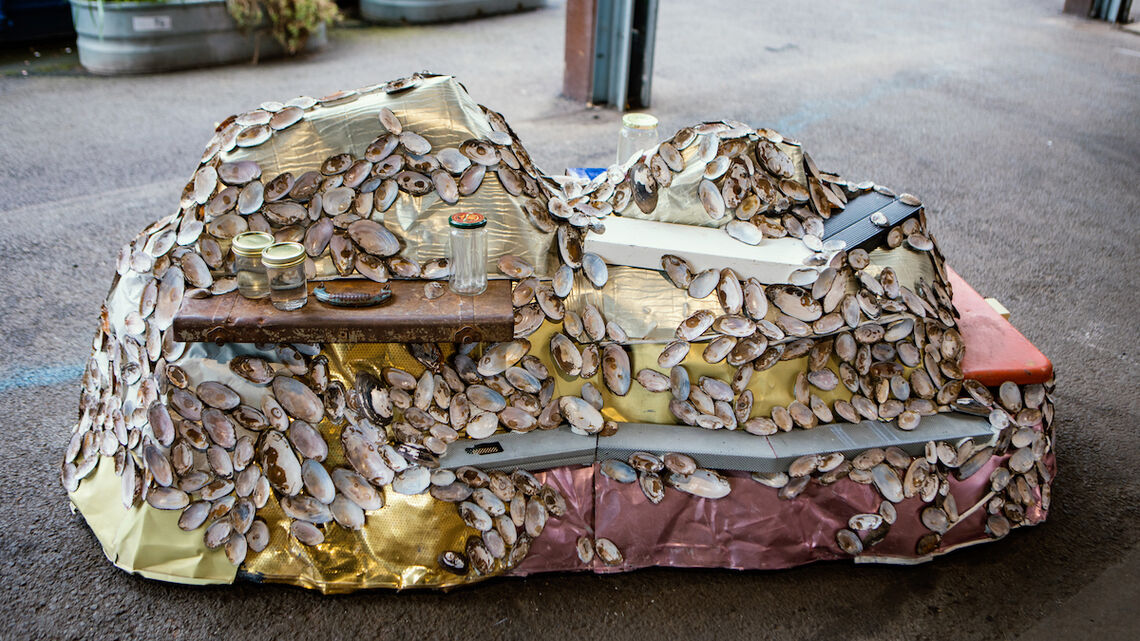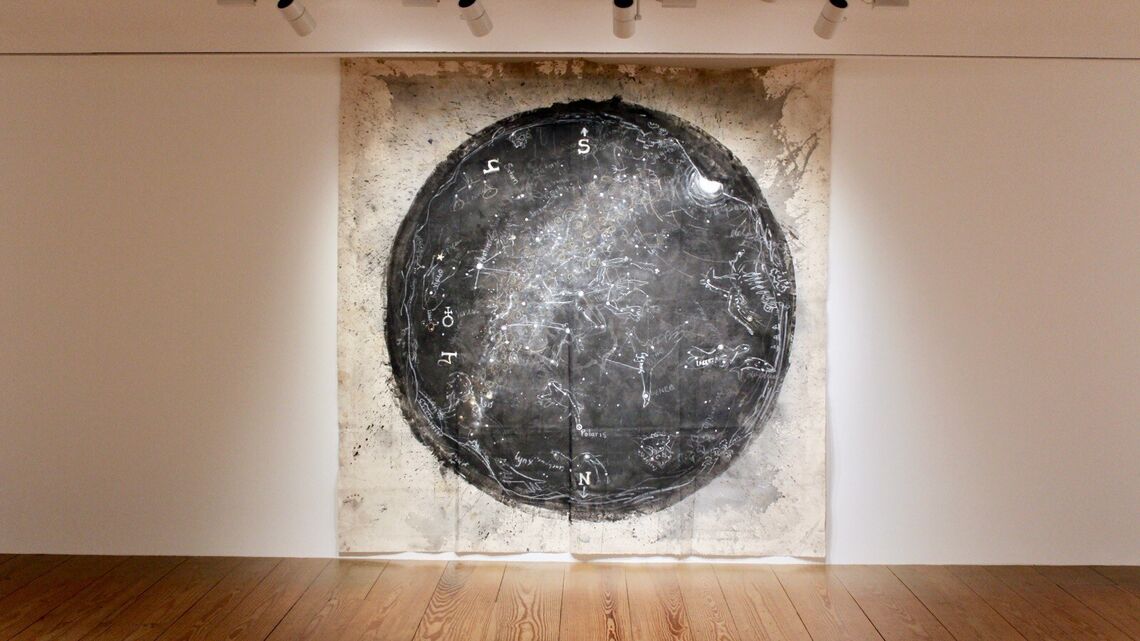Jean Shin: Freshwater
Curated by Kerry Bickford
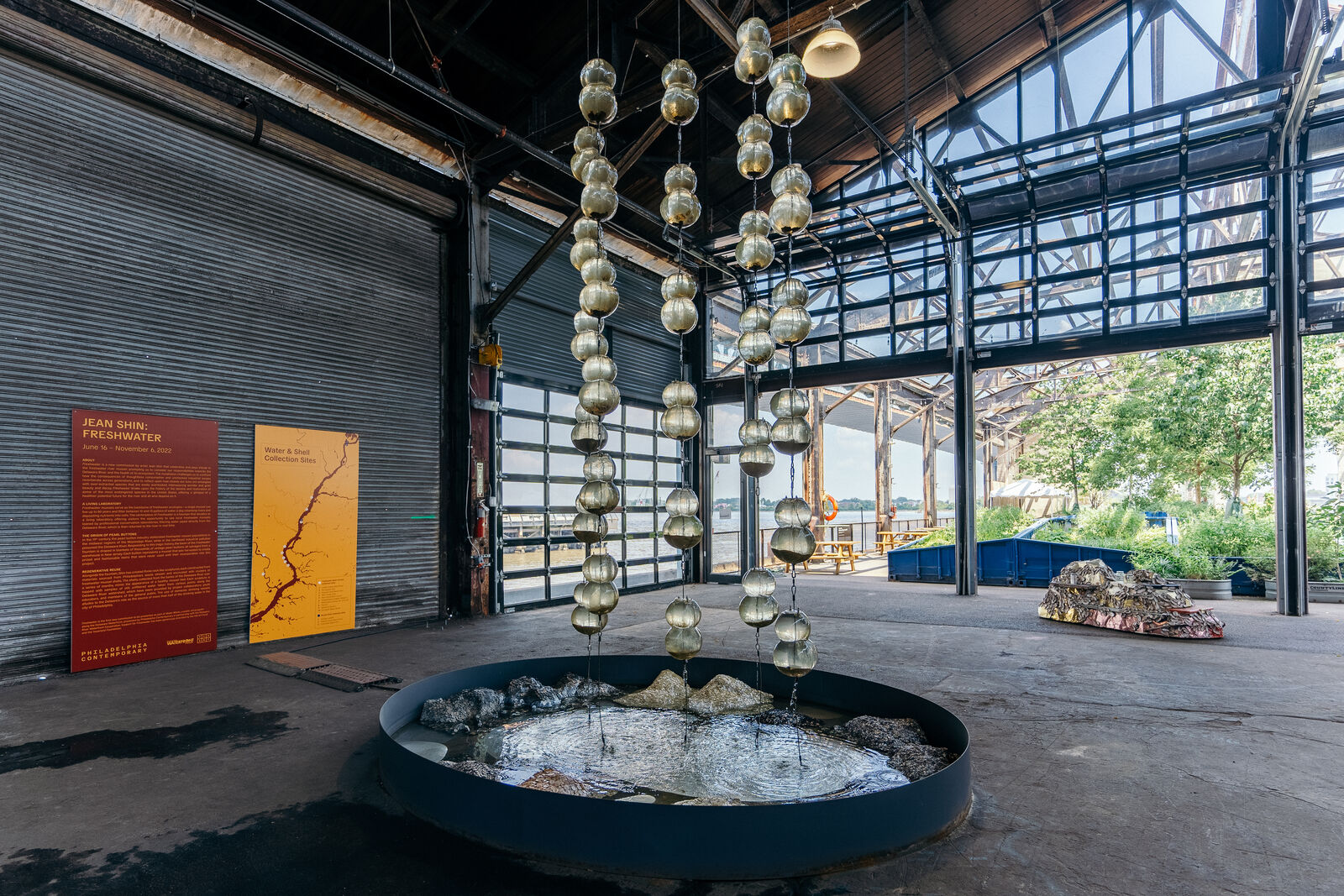
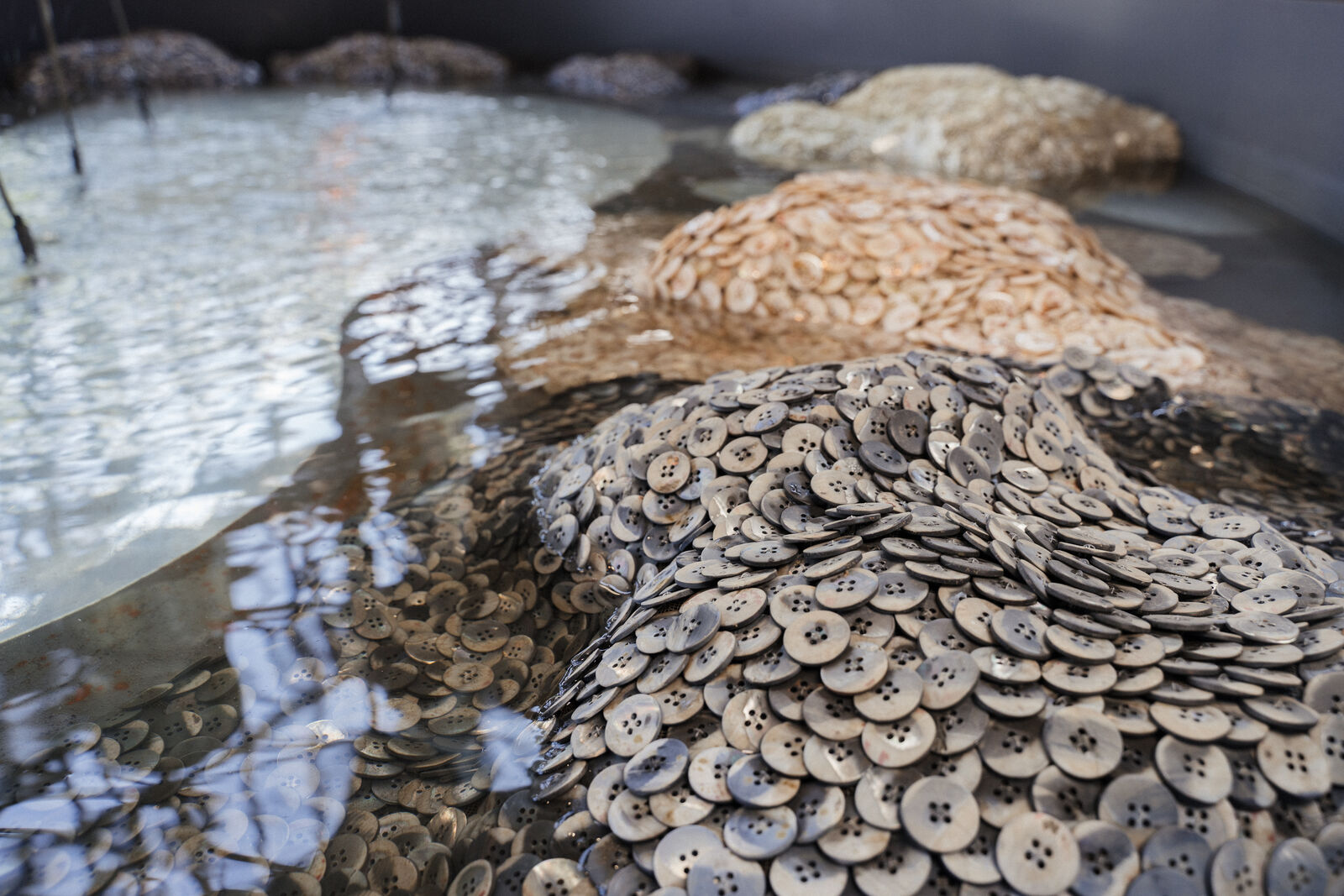
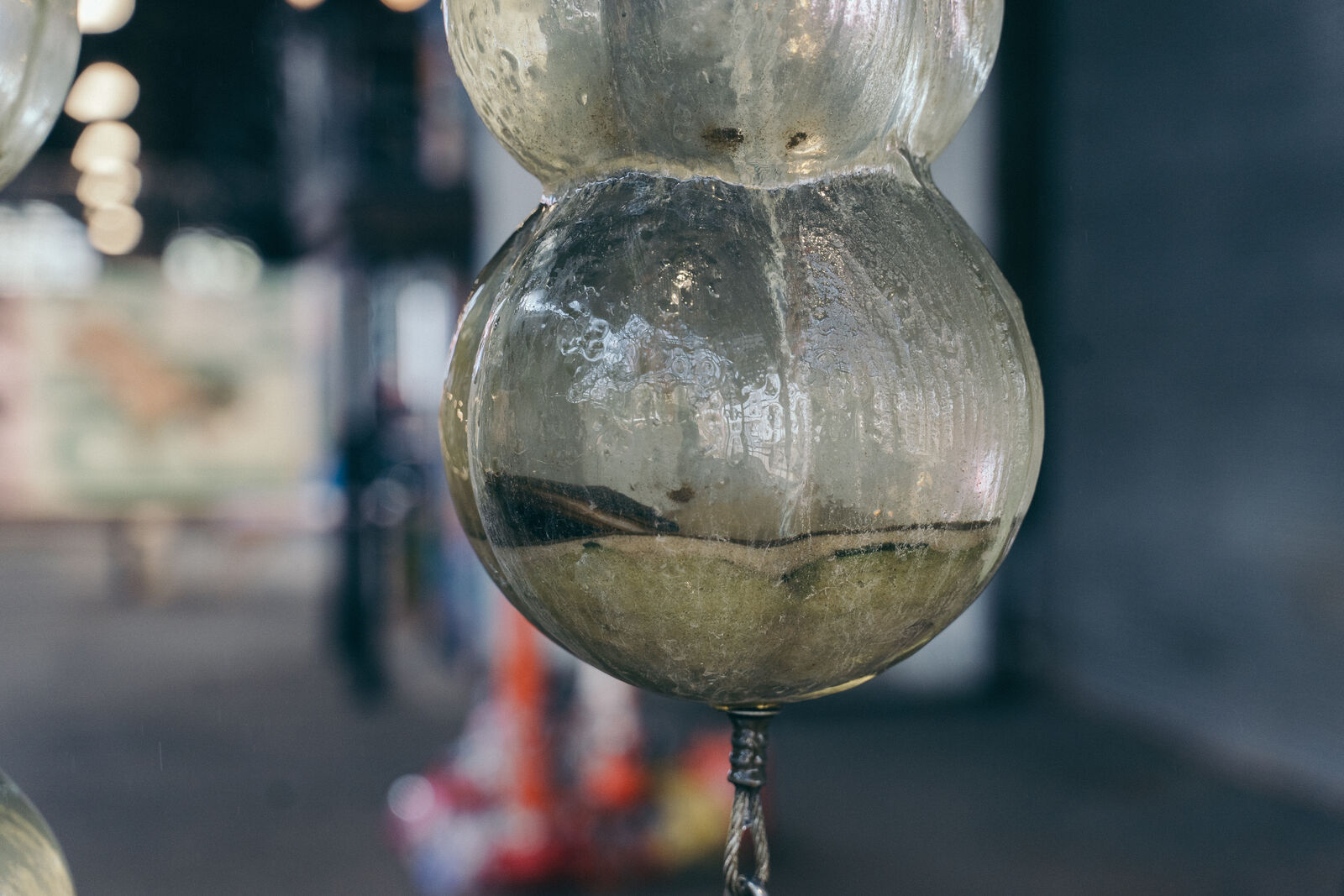
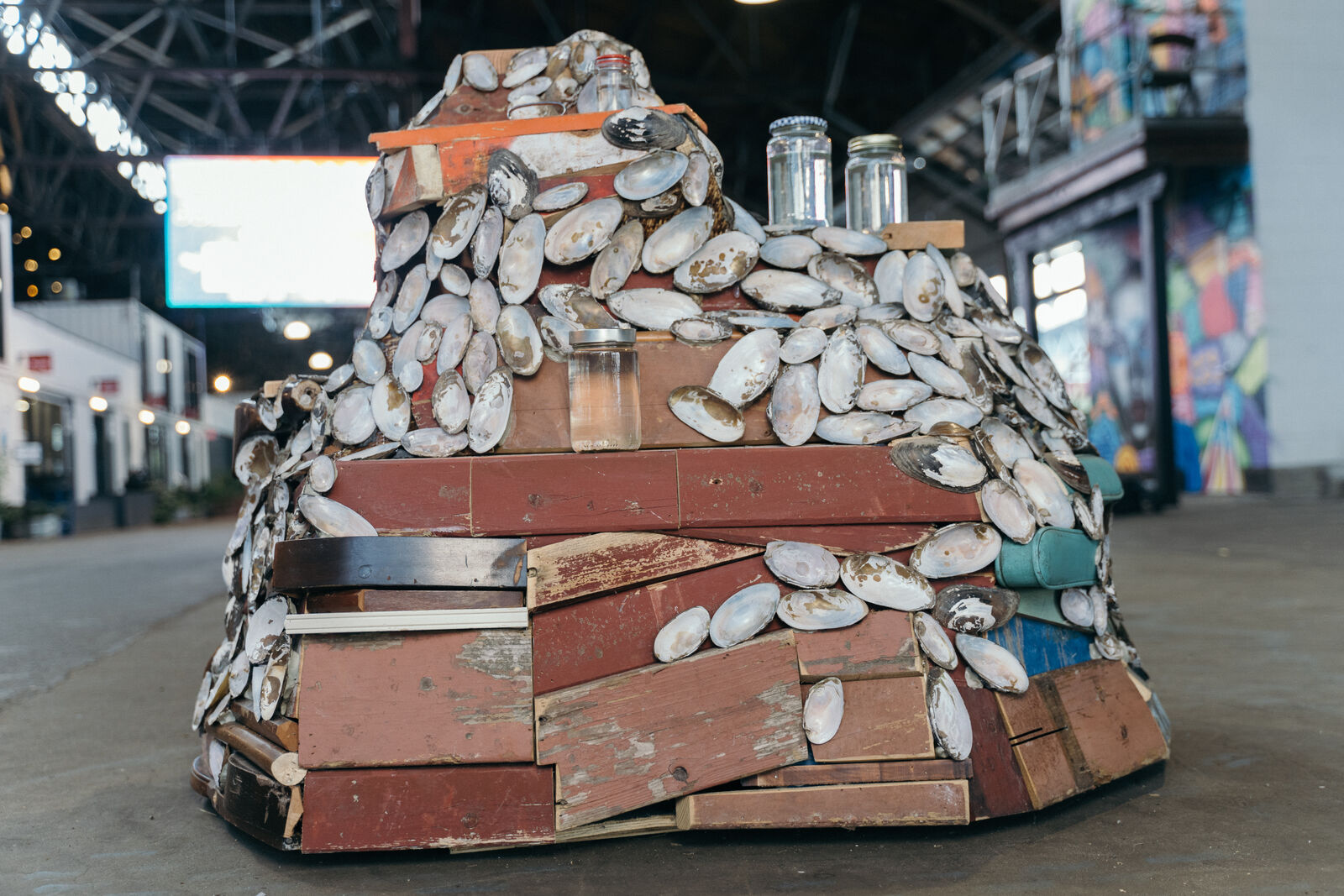
Freshwater is a new commission by the artist Jean Shin that celebrates and pays tribute to the freshwater river mussel, while inviting those of us who live along the Delaware River watershed to consider our responsibilities towards the health of the river and its ecosystem. Interweaving wonder and grief, beauty and decay, Freshwater draws upon the history of the decline and restoration of some of the most endangered species in the United States and offers a glimpse of a healthier potential future for the river and all who depend on it.
315a0351
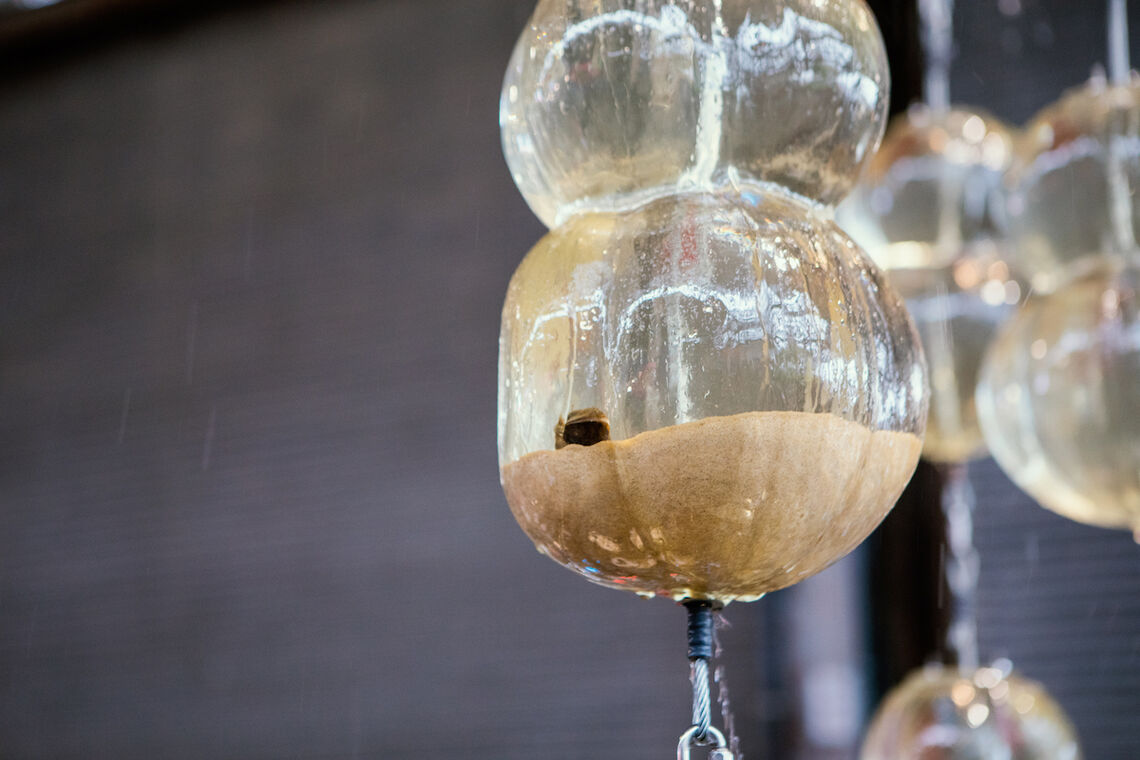
A Living Laboratory
Freshwater mussels serve as the backbone of freshwater ecologies—a single mussel can live up to 80 years and filter between 10 and 15 gallons of water a day, cleansing rivers and depositing nutrients into soils. The centerpiece of Freshwater is a fountain that doubles as a living laboratory, offering visitors the opportunity to see local, freshwater mussels filtering water piped directly from the Delaware River, which is then returned to the river in real time. In the fountain, chains of hand-blown glass vessels are suspended from the ceiling, each containing a live mussel specimen. The curved glass of the vessels magnifies each mussel as they filter the water and anchor themselves in the sand, rendering an overlooked species wondrously visible to the public eye. The stream of water flowing through the vessels culminates in a mirrored basin of clear, purified water that is then returned to the river.
315a0341
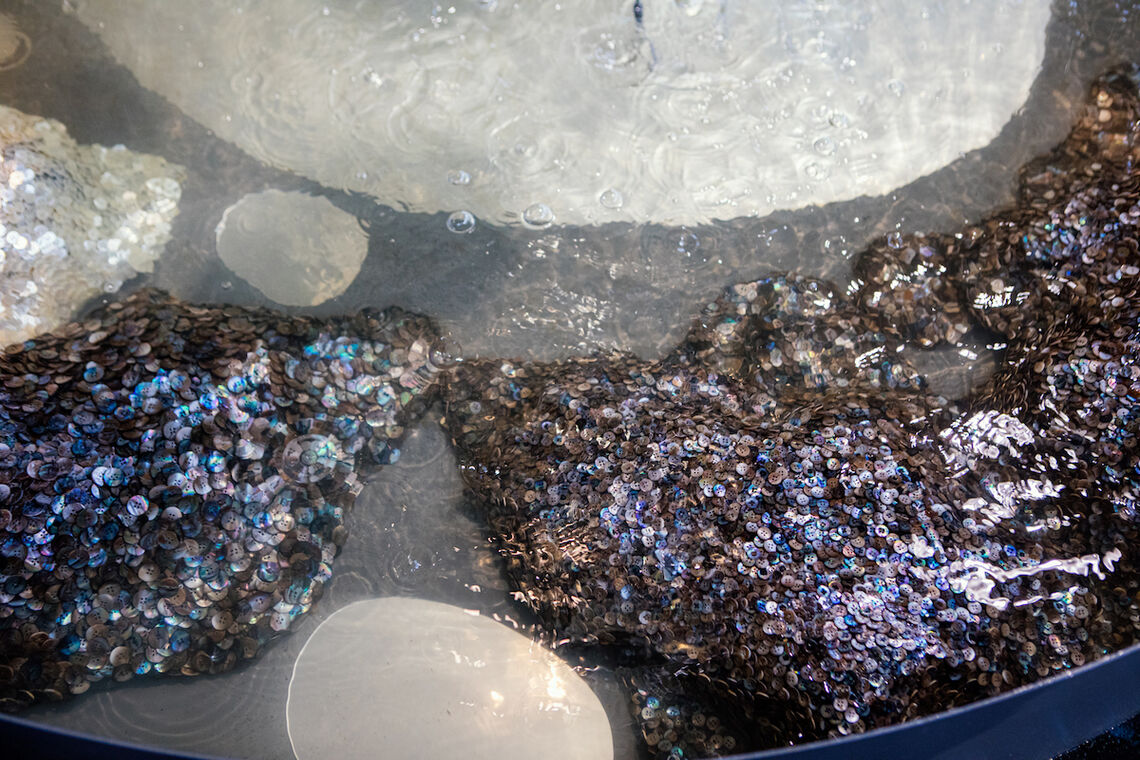
The Origin of Pearl Buttons
Freshwater is haunted by the specter of industrial overconsumption and waste that have depleted freshwater mussel populations in the northeast United States, as well as other major watersheds across the country. In the 19th century the pearl button industry obliterated freshwater mussel populations in the midwest, while in the northeast industrial pollution poisoned the Delaware River for a generation. Responding to this history, the basin of the Freshwater fountain is draped in blankets of thousands of vintage pearl buttons, all salvaged from warehouses along the east coast. Each button represents a mussel that was harvested to create decorative items that were, until their incorporation into this project, never used. As we gaze into the mirrored portions of the fountain’s basin, we are invited to witness ourselves as part of the balance between the past devastation reflected by the buttons and the present revitalization on display in the vessels above.
315a0049
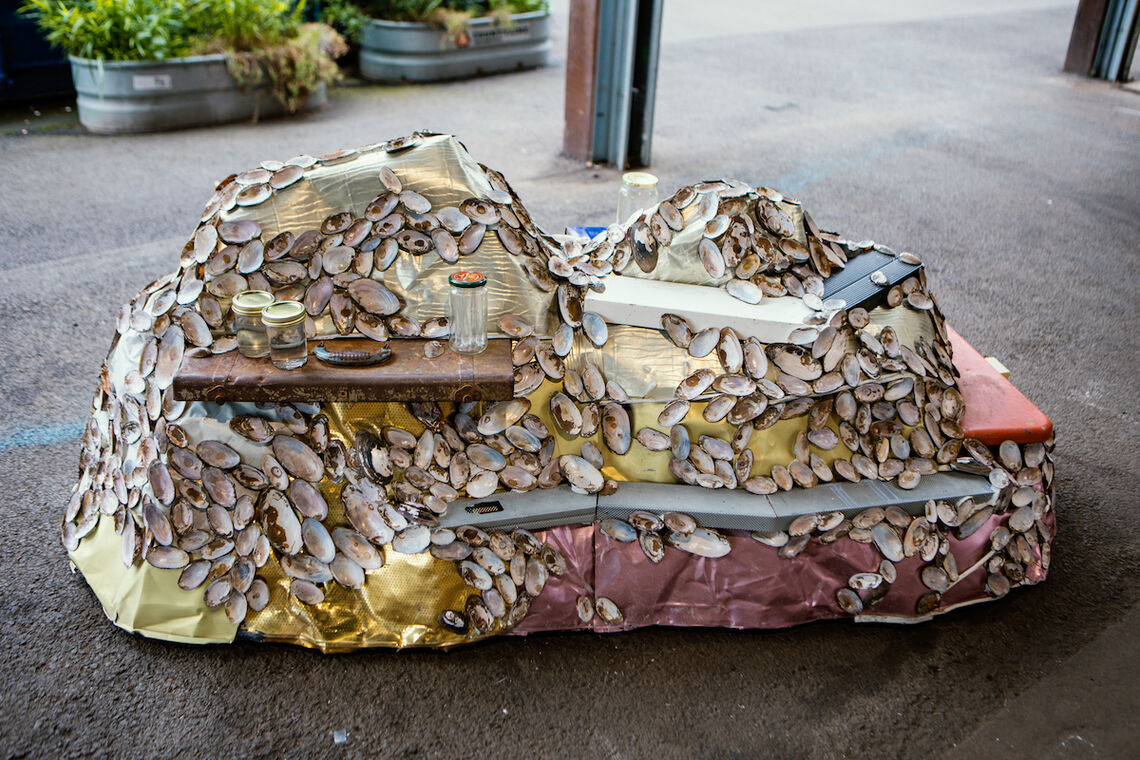
Regenerative Reuse
Reflecting on the forces that have contributed to the collapse of freshwater mussel populations, Jean Shin has also contributed three rock-like sculptures encrusted with clusters of empty mussel shells that mimic the appearance of a healthy mussel bed. They are constructed from materials sourced from Philadelphia’s waste stream, collected from the banks of the Delaware River over a series of months, as part of a collaboration with Recycled Artists in Residency (RAIR). These sculptures are a deathly reminder that commercial excess is an ever-present issue, and one in which all Philadelphians are implicated.
freshwater mapgraphic horizontal

Each sculpture is also topped with samples of still, unfiltered water taken from various points along the Delaware River watershed, which have been provided by project collaborators, youth educators, and members of the general public. The use of domestic drinking vessels alludes to the Delaware’s role as the source of more than half of the drinking water in the city of Philadelphia.
Freshwater draws out the tensions between the invaluable role of the living mussels in our ecologies and the choice to materially prize these species in death. It asks us to confront how the consequences of thoughtless consumption and unchecked industrial excess can reverberate across generations and how closely our lives are entangled with species that we can easily overlook. But Freshwater is also a tribute to the slow, necessary labor of restoration—the work of numerous scientists and partners in the region that offer us all hope for a better future.
About the project
Freshwater is the first new commission to be presented as part of Water Marks, a public art program along the Delaware Waterfront, presented by Philadelphia Contemporary in partnership with the Delaware River Waterfront Corporation. Support for Freshwater has been generously provided by the VIA Art Fund and the Yaverland Foundation.
Water Marks references the term “high-water mark,” the point at which a body of water is at its highest. To live and work along the water in our current historical moment is to witness the ways in which precarity, specifically precarity caused by climate shifts, extreme weather, and industrial shortsightedness, threatens to upend our lives and livelihoods. Water Marks will be an invitation for contemporary artists from a range of practices to respond to this precarity, as well as the river’s possible futures, making their own temporary marks along the Delaware River.
Press Release
Artist Jean Shin shares insights into her artistic practice and inspiration, and the complex relationship to the Delaware River conceptualized in Freshwater.
315a0263
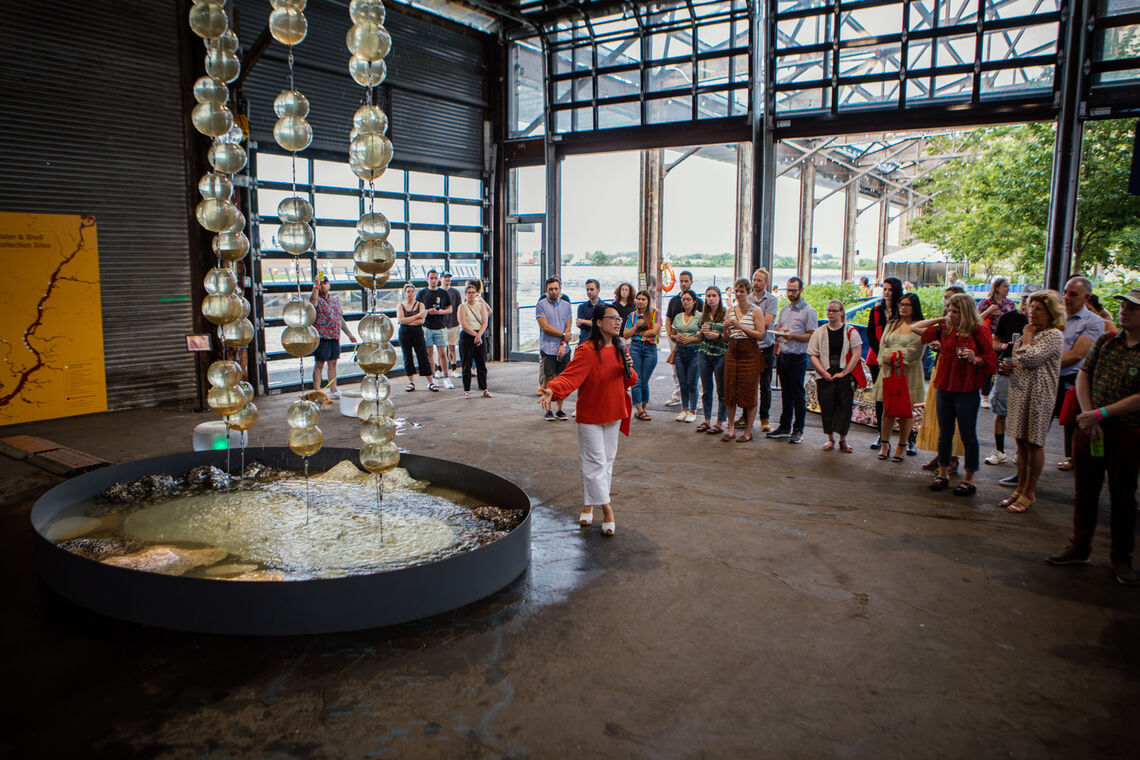
About the artist
Known for her large-scale installations and public sculptures, artist Jean Shin transforms accumulations of discarded objects into powerful monuments that interrogate our complex relationship between material consumption, collective identity and community engagement. Often working cooperatively within a community or region, Shin amasses vast collections of an everyday object or material—Mountain Dew soda bottles, mobile phones, 35mm slides—while researching its history of use, circulation and environmental impact. Distinguished by this labor-intensive and participatory process, Shin’s poetic yet epic creations become catalysts for communities to confront social and ecological challenges.
Born in Seoul, South Korea, and raised in the US, Shin works in Brooklyn and Hudson Valley, New York. She is a tenured Adjunct Professor at Pratt Institute and holds an honorary doctorate from New York Academy of Art. Shin’s work has been widely exhibited and collected in over 150 major museums and cultural institutions, including solo exhibitions at The Museum of Modern Art in New York, Philadelphia Museum of Art, Smithsonian American Art Museum in Washington DC, and Asian Art Museum in San Francisco, where in 2020 she was the first Korean-American woman artist featured in a solo exhibition. Shin has received numerous awards, including the forthcoming Frederic Church Award for her contributions to American art and culture. Her works have been highlighted in The New York Times and Sculpture Magazine, among others.
Freshwater curator Kerry Bickford and artist Jean Shin during the opening reception at Cherry Street Pier.
Photos by Daniel Jackson.
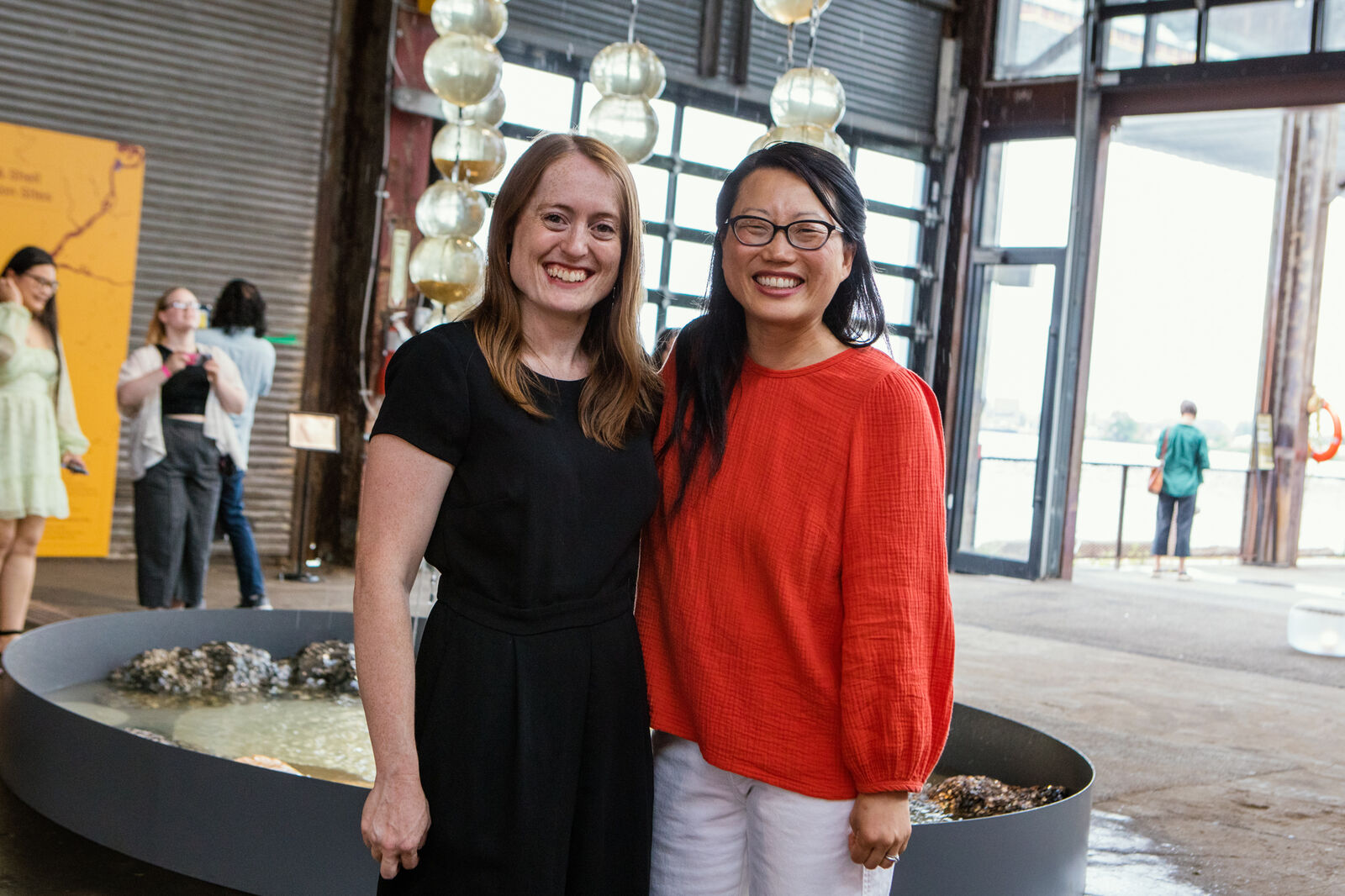
Guests inside Cherry Street Pier, during Freshwater's opening reception.

Guests during the opening reception.
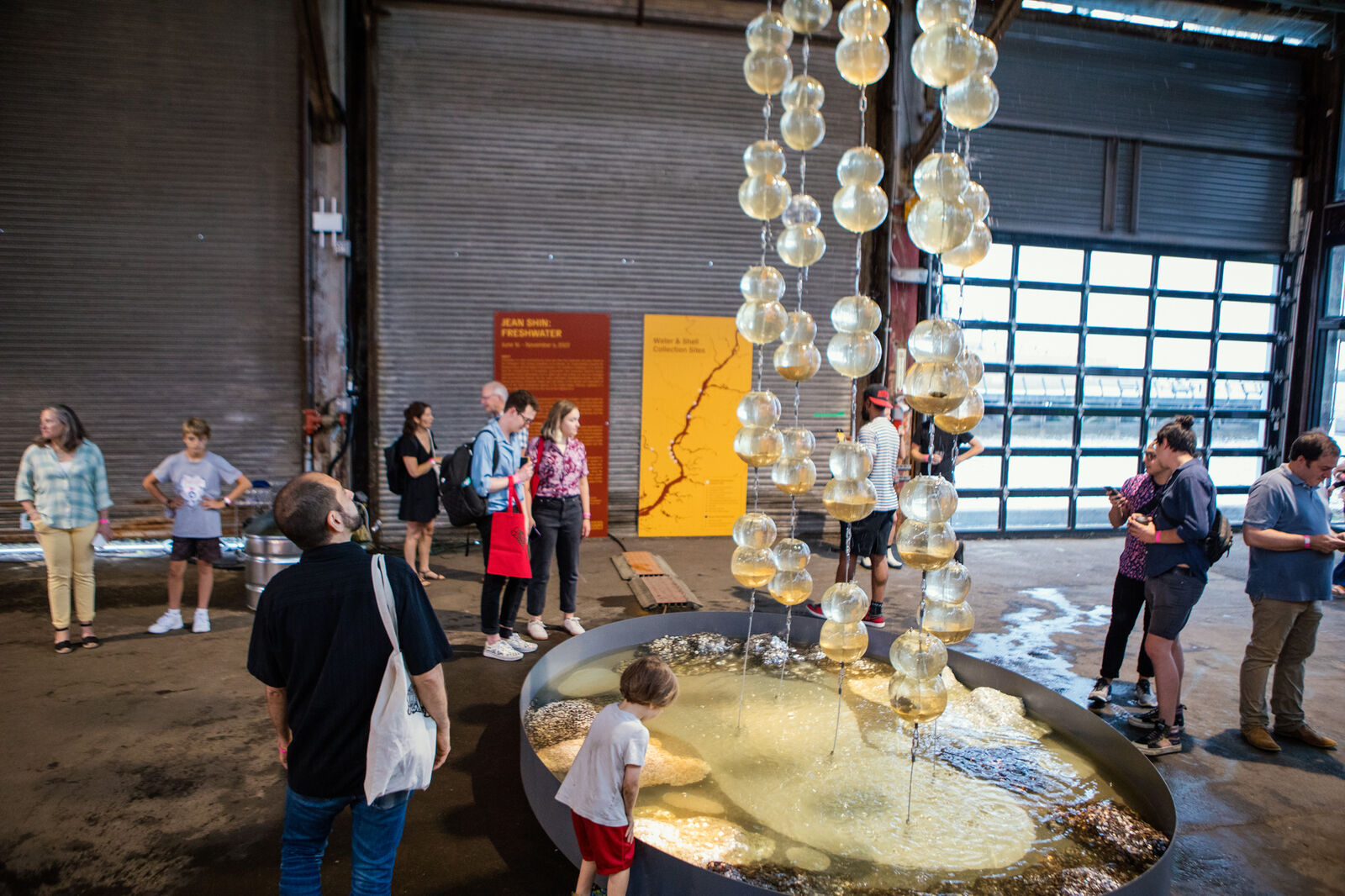
Close-up of a live mussel inside one of the hanging glass vessels that's part of the sculptural fountain installation.
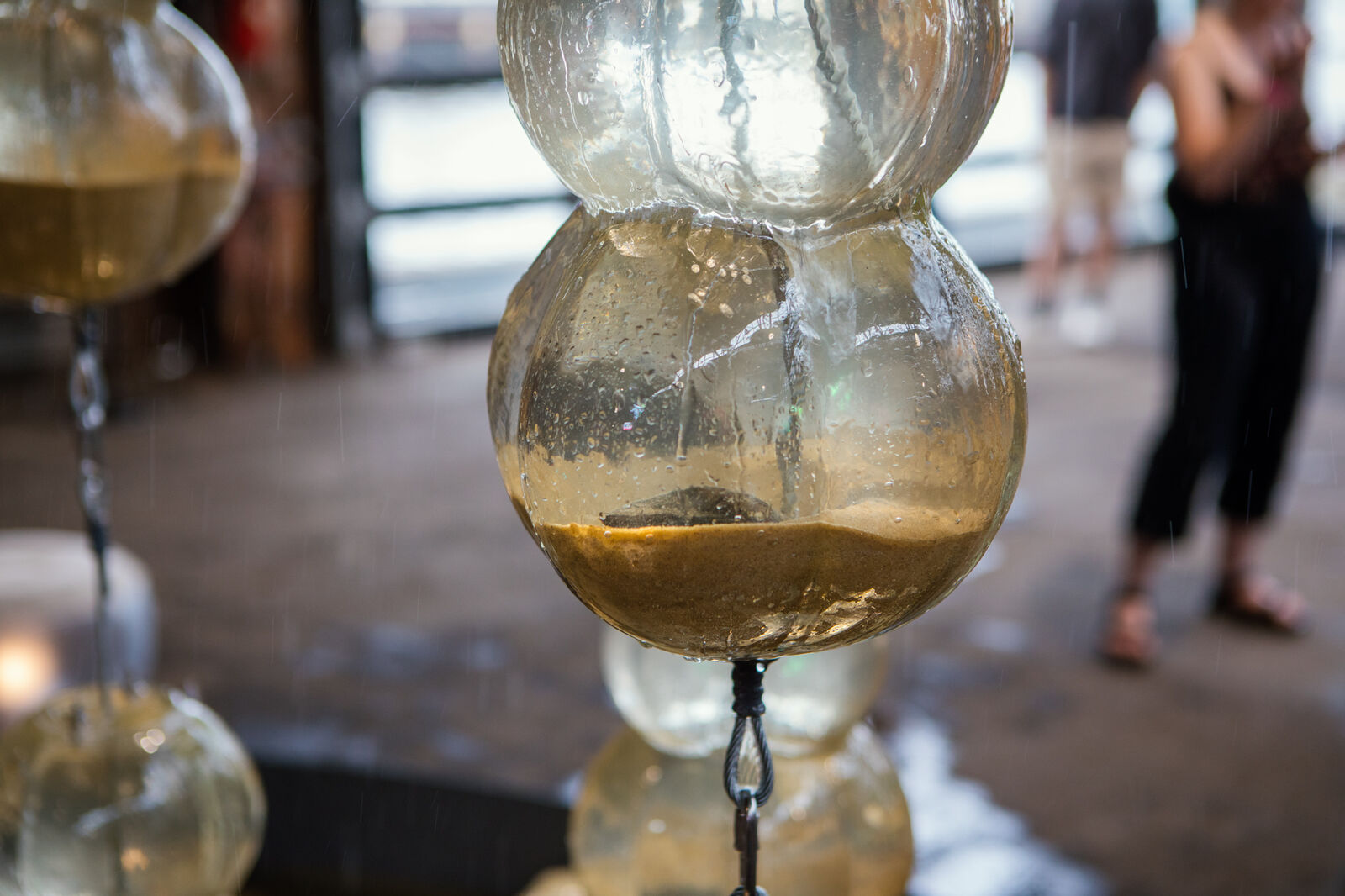
A guest taking a photo of the fountain installation. The basin features pearl blankets, partially submerged in water, sewn from reclaimed pearl buttons made from mussel shells.
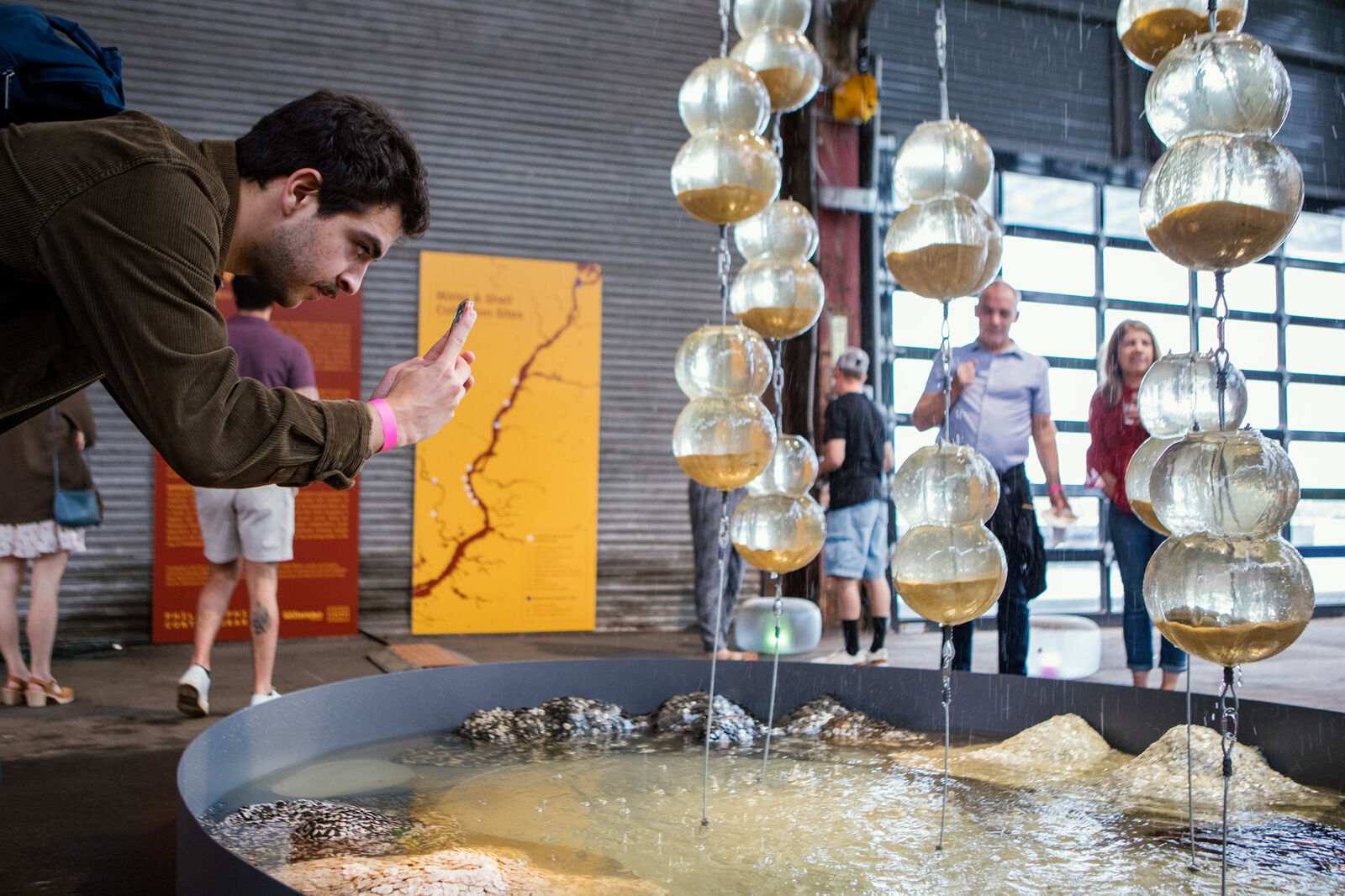
Guests mingle during the Freshwater opening reception.
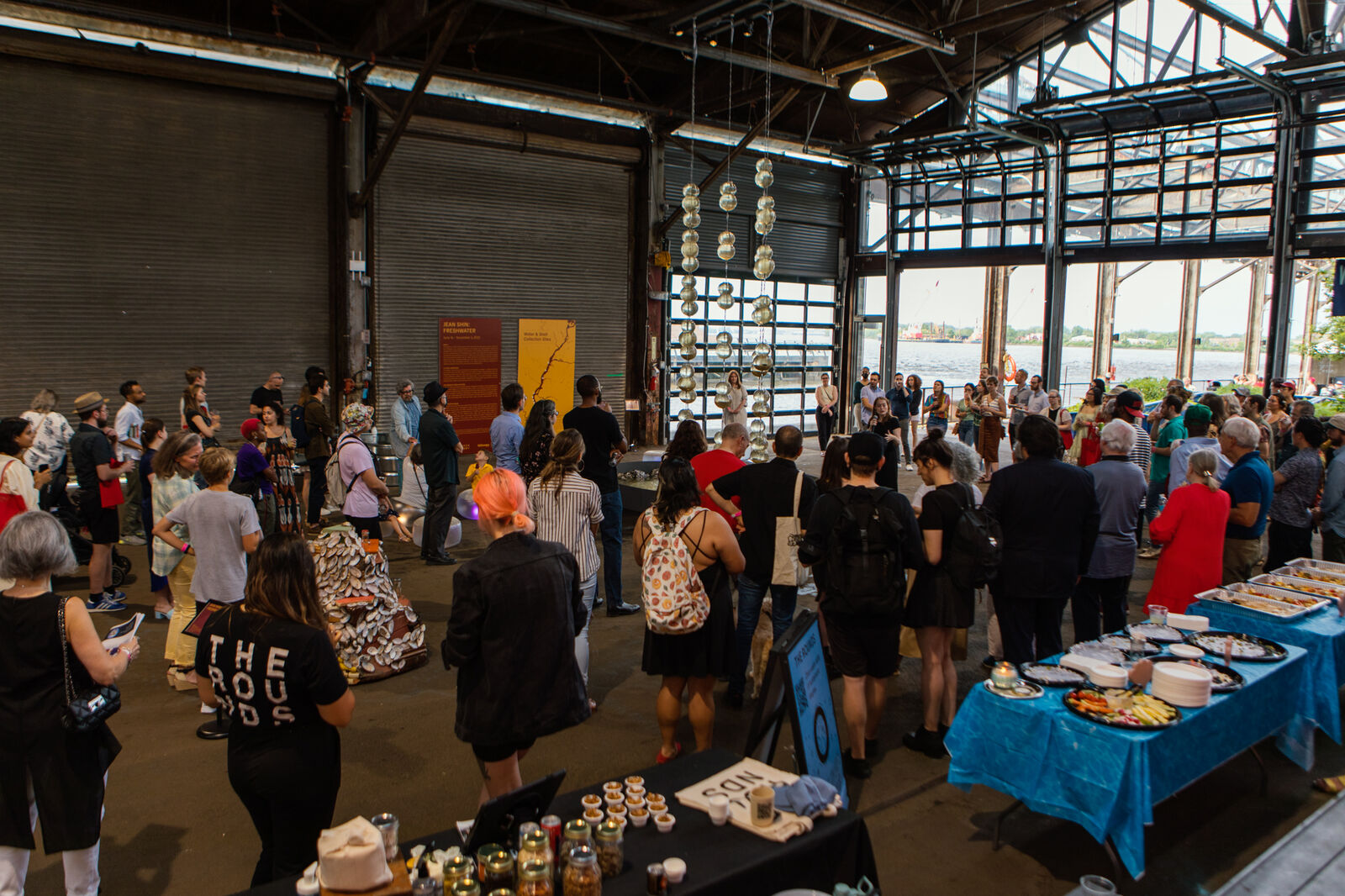
Philadelphia Contemporary founder, Harry Philbrick, giving remarks at the opening reception.

Two guests in the background pointing at fountain, featuring hanging vessels filled with water and live mussels, in the foreground.
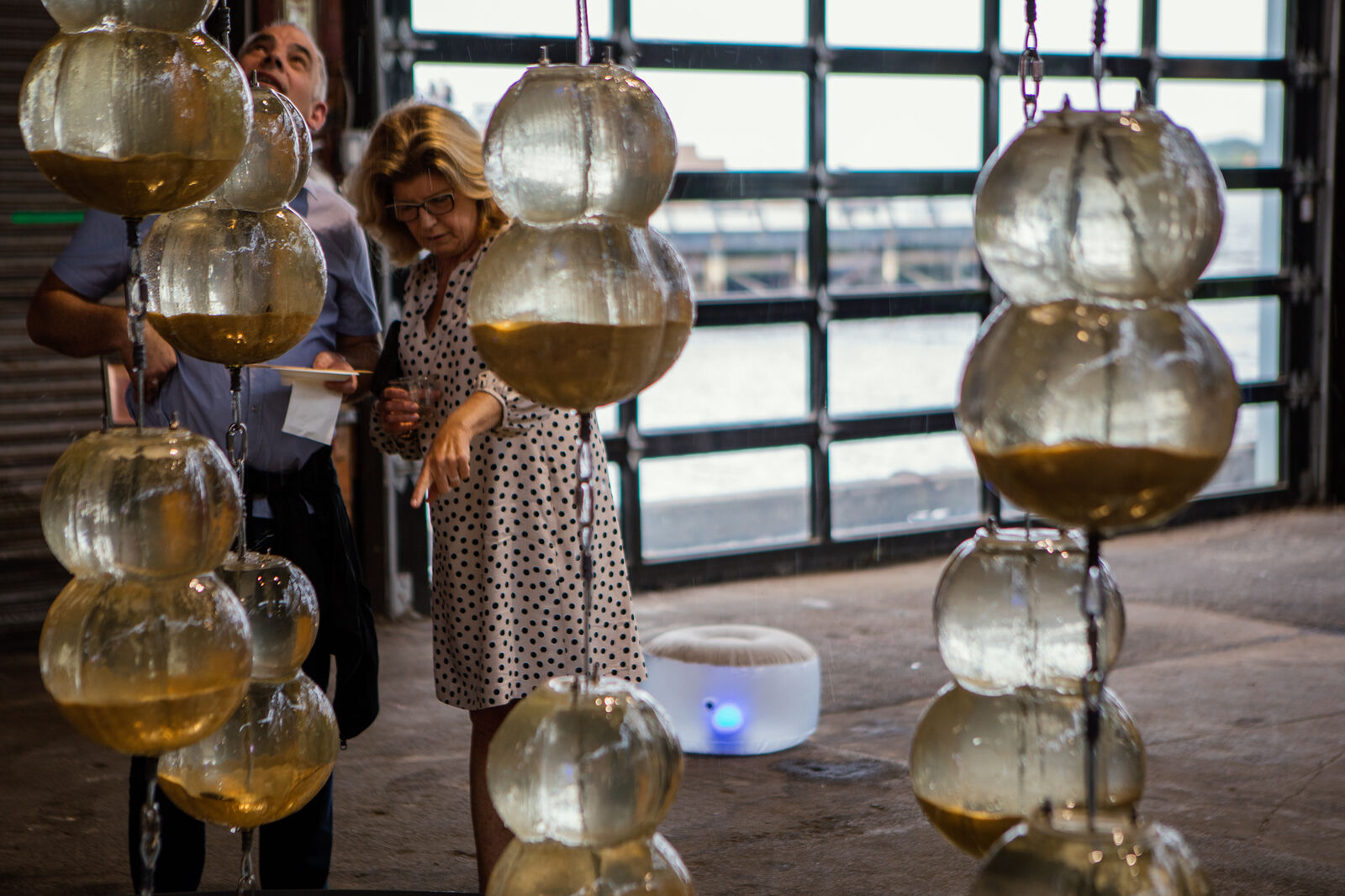
Artist Jean Shin and curator Kerry Bickford share a moment.

Guests during the opening reception.
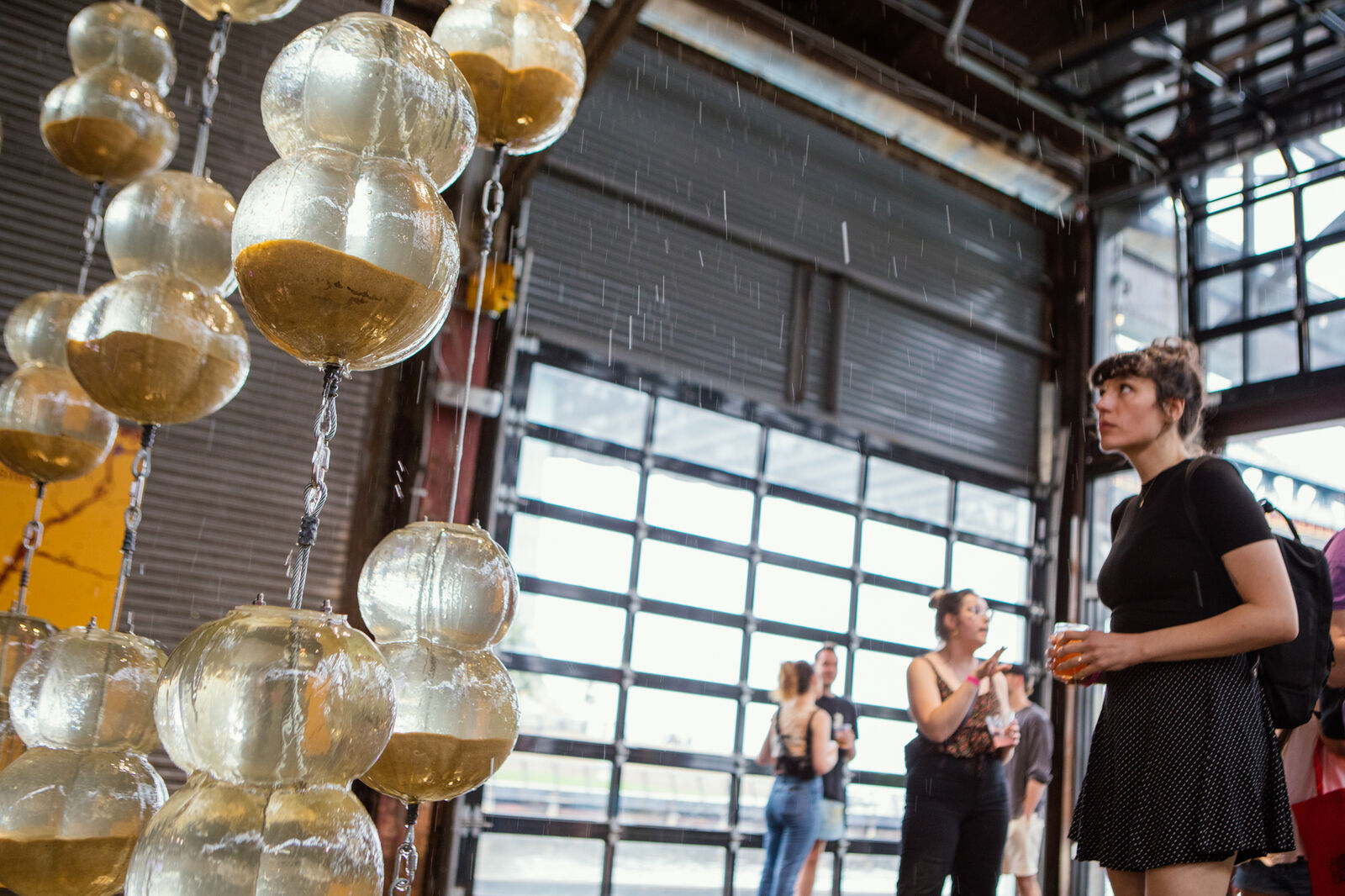
Children sit and play on illuminated floor pillows.
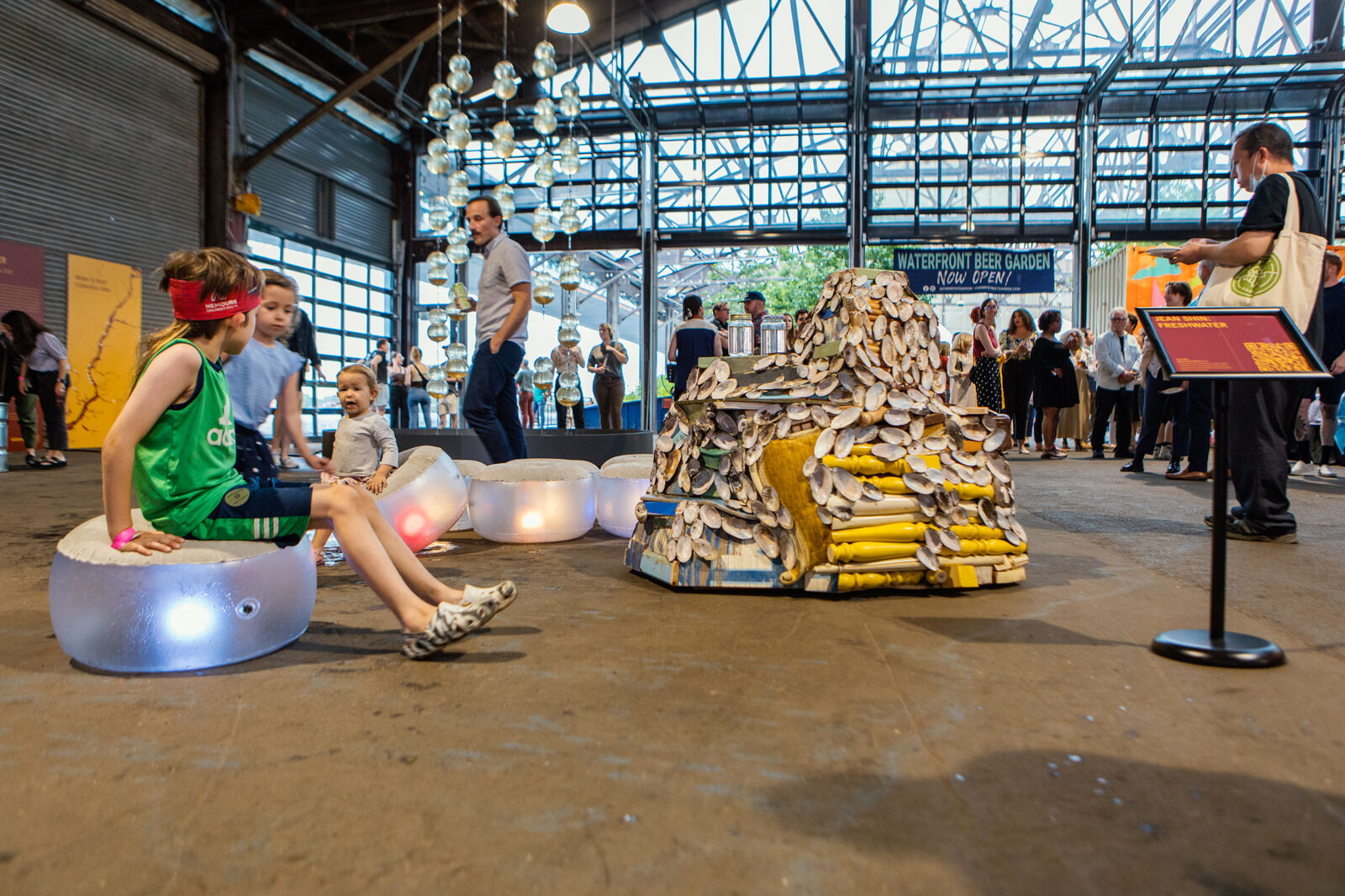
Artist and Rising Wing member Marian Bailey showcasing a Philadelphia Contemporary tote bag, featuring an illustration that she created for the evening's screen-printing activity.
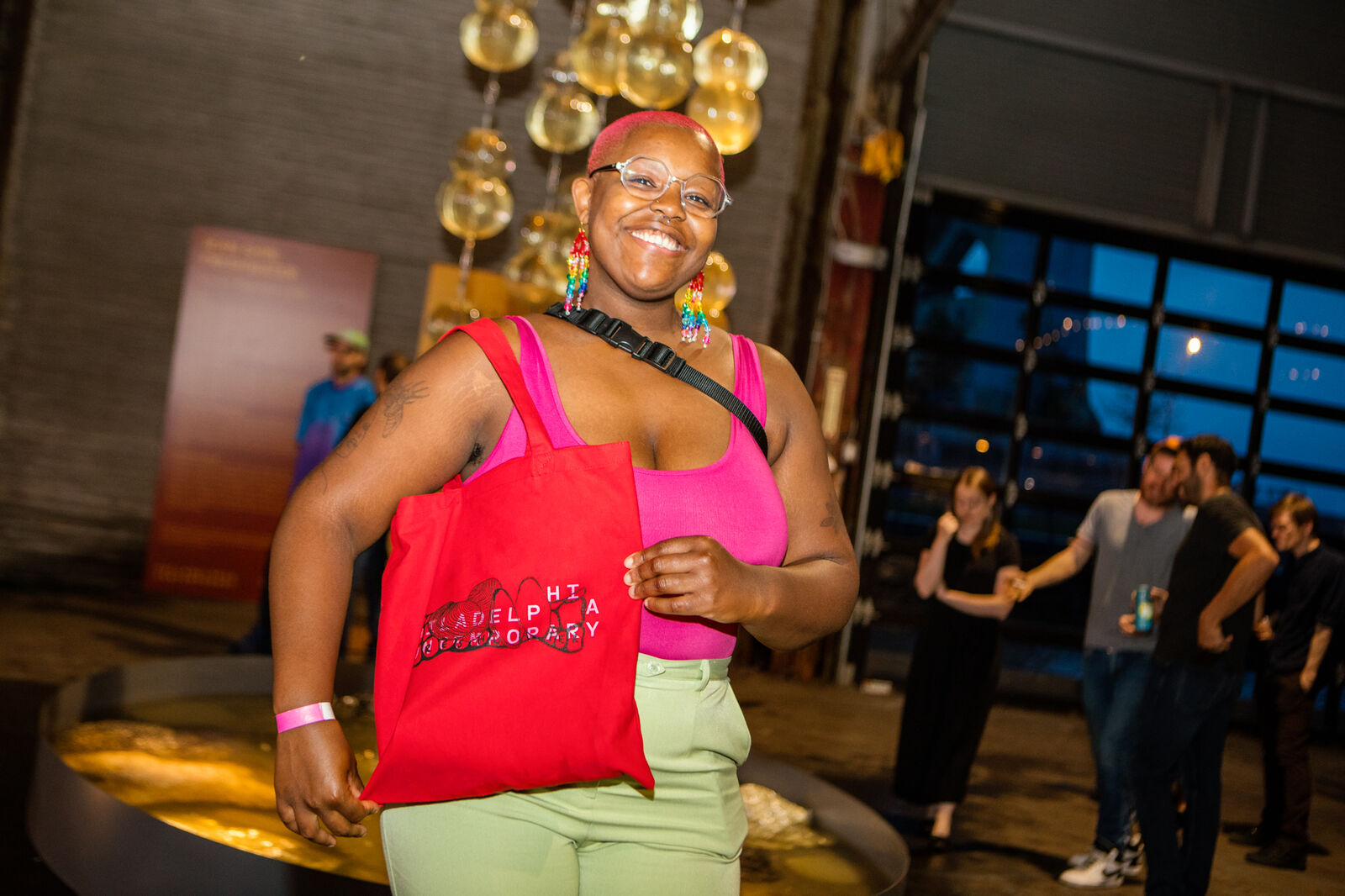
Four guests showcase red tote bags that they've screen-printed with a special illustration created for the event.
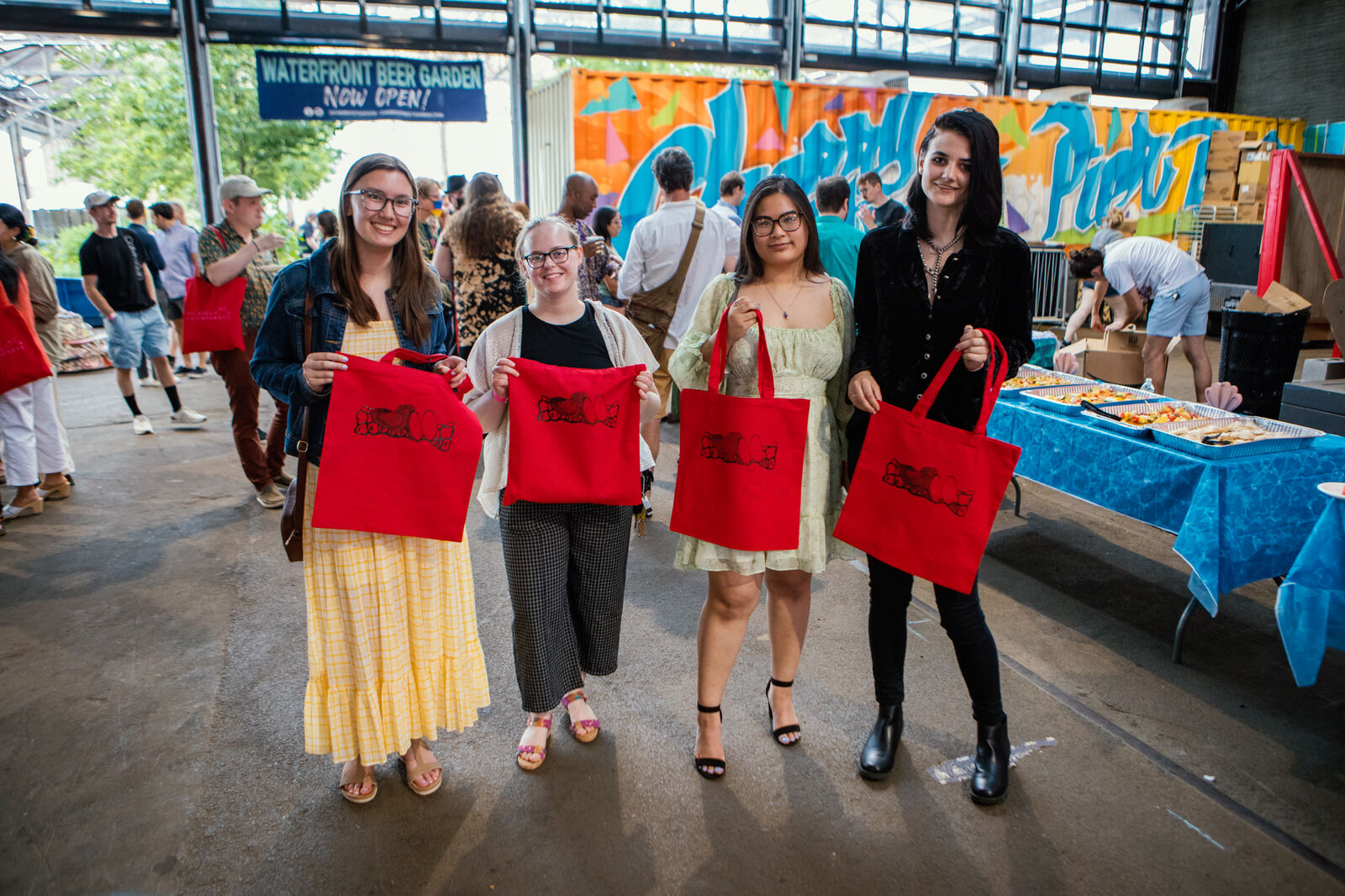
A guest partakes in the screen-printing art activity during the opening reception.
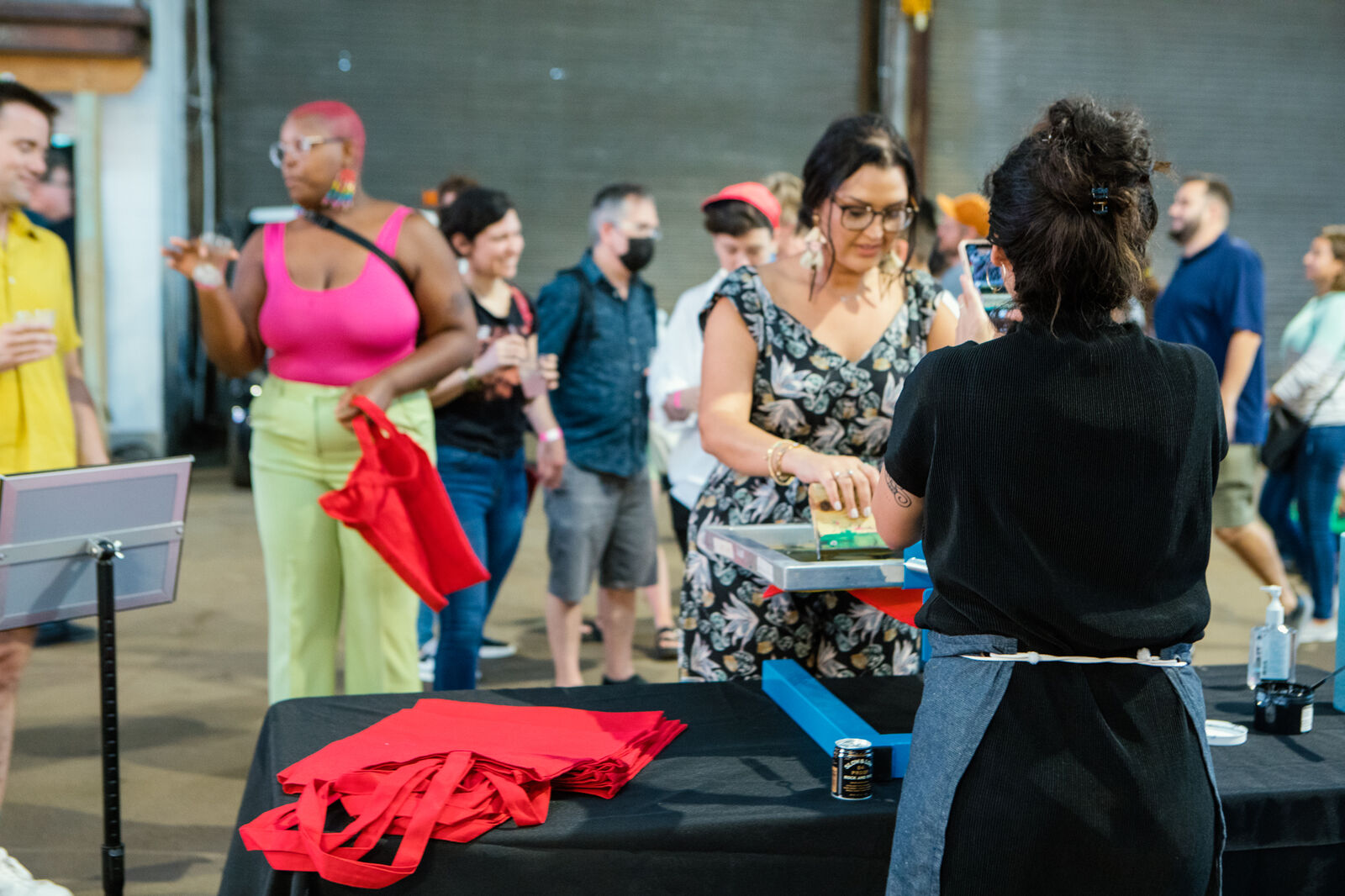
Guests inside Cherry Street Pier during Freshwater's opening reception
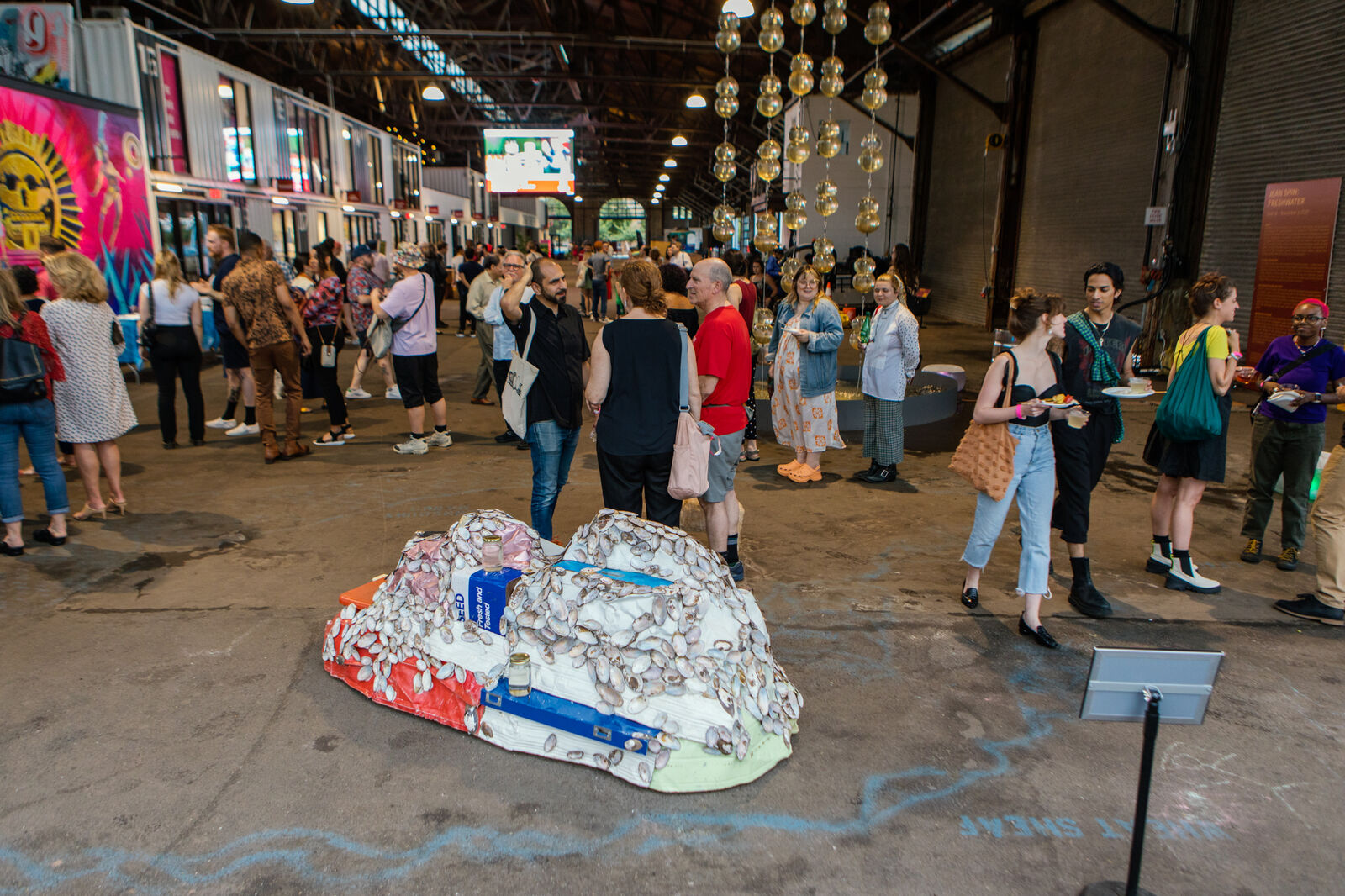
PC's Curator of Lived Culture, Nicole Pollard, flanked by two guests during the opening reception.

PC's Director of Advancement, J.J. El-Far, flanked by two members of Rising Wing.

Artist Jean Shin
